-
TrendsEuropean Affairs
-
SectorHealthcare and Pharmaceutical Industry
-
CountriesGlobalSpainUnited States
Introduction
-
Threats to public health mean transforming the healthcare sector through technology is a pressing concern.
-
Technology can help design prevention and wellness models.
Over the last decade, we have seen impressive progress in medicine. Today, there are robots that doctors can use to operate, implants made with 3D printing technology, programs that analyze large volumes of data (big data) to resolve health conditions in seconds, artificial intelligence processes that give quicker and more accurate diagnoses, and mobile devices and applications that help patients with chronic diseases. This list is in addition to the many other digital processes, programs, applications, and cutting-edge pieces of equipment that can help patients make a speedy recovery while reducing the health system’s costs. However, all this sounds like science fiction, something far removed from a reality in which the paper culture is still in play.
Over the last 18 months, health systems in many countries have been the center of attention. They have shown their fragility, need for additional investment, and, above all, need for transformation to speed up processes and generate data to support effective decision-making in response to health threats such as the COVID-19 pandemic. This health crisis boosted the research and development of new medicines and vaccines and brought about the widespread use of telemedicine, but it also meant the decisions made by doctors, scientists, governments, and society at large regarding how to tackle the pandemic were put under scrutiny.
These issues, which affected everyone, were so clear because the health sector was subject to more review, discussion, and criticism than ever before. A wide variety of entities were looking closely at it and its problems, from large research centers to governments, multilateral bodies to pharmaceutical companies, the medical community to journalists covering medical devices and health-based technologies – and of course society in general. So much attention on and investment in a health matter marked a historic occasion. During this time, the impact of innovation and public health on socioeconomic development has been very highly valued.
Against this backdrop, it is important to analyze what is required to best tackle health threats and anticipate good responses to changing needs. One of the main priorities is clearly digital transformation, which can help achieve a modern, interconnected health system. This would improve patient experiences, increase doctor and health worker productivity, produce data to enhance healthcare decision-making, and generate government savings.
Below are five key recommendations, since synergy between medical equipment manufacturers, software and new technology developers, governments, and healthcare decision-makers is pressing. It is only through this collaboration that it will be possible to ensure the digital transformation of one of the most critical sectors for welfare in general – health. New technologies, including artificial intelligence, big data analysis, mobile applications and devices, and cloud storage, among others, have the power to significantly contribute to improving any health system.
However, for many health service users, the majority of hospitals are far from being able to offer these technological benefits with what they have at present. Let’s look at an example – electronic medical records and electronic filing systems improve accuracy, reduce diagnostic errors, and enhance file security, but while some efforts are being made to incorporate these tools, they are still ad hoc and unstructured. In order for a health system to be truly modern, it must have a structured plan that addresses the widespread use of technology to enhance medical care, optimize healthcare results, fully harness health services, improve patient experiences, and perfect or develop new prevention and healthcare models.
“One of the main priorities is clearly digital transformation, which can help achieve a modern, interconnected health system. This would improve patient experiences”
How digital hospitals work
Digitalization is a challenge for any hospital’s various departments, but it offers a host of benefits for all involved since, for example, patient health records could always be organized and up to date. Electronic medical records improve accuracy, because they help doctors quickly access and understand data – something that does not happen with incomplete documents and handwritten notes. This also leads to cost reductions, since it gets rid of paper records, reduces the number of administrative staff required, and minimizes the physical space needed to store records. Digital medical records are saved on a server or in the cloud, improving risk management by allowing patient data to be monitored efficiently and potential risks to be addressed quickly, which limits liability. Digitalization enhances general security, as automatic restrictions can guarantee that files are protected from any unauthorized access. By going digital, medical records can quickly and easily be stored on multiple platforms to enhance productivity and improve workflow, allowing hospitals to tend to more patients each day.
As with hospitals, the whole health system should be digitalized and interconnected to ensure patient information is available to any authorized person with access to a computer and the internet. When we talk about the “health system,” we mean all hospitals, public or the private; State, regional, and federal health services; and health sub-systems, as often appear in certain Latin American countries, where the health system may integrate medical services from different systems. This reality has forced health authorities, the medical community, patients, and companies alike to rethink health system operating models in a world where sustainability, quality, and participation are fundamental to not only progress, but to enhancing service quality in a scenario with limited financial, human, and equipment resources.


Regulation: WHO guidance on digital technologies and universal coverage
According to the World Health Organization (WHO), harnessing the potential of digital technologies is fundamental to achieving universal health coverage. However, to integrate these technologies into health system, they must first be shown to have positive long-term impacts.
Although the WHO’s interest in the matter may appear recent, it first wrote a manual on cyber-health strategies in 2012, and at the 2018 World Health Assembly, governments unanimously adopted a resolution to develop a global digital health strategy. March 6, 2019, the Digital Health Department was created to reinforce the WHO’s ability to evaluate digital technologies and help its member states prioritize and regulate them. This is important because one of the main problems raised regarding the use of digital technologies and information systems is data privacy. The increased visibility and availability of information must also guarantee the protection of user information.
The WHO has designed a global digital health strategy that seeks to speed up the adoption of digital solutions to achieve the health targets included in the sustainable development goals. New technologies and ongoing digitalization support fair and universal access to quality health services and enhance the sustainability of health systems by extending health promotion and aiding in the diagnosis and treatment of diseases. However, the WHO believes the success of these digital interventions will depend on context and appropriate design. These tools must consider structural aspects of the locations where they will be implemented, such as available infrastructure, the technology’s ease of use, and current health system needs.
What digitalization and use of these technologies includes
Digitalization covers many areas, such as the ability to share patient information and their state of health, as well as services and resources, electronically. These technologies include telemedicine, mobile devices, artificial intelligence, robotics, and genomics, to name a few. These technologies have translated into incredible strides, permitting doctors to study an individual’s DNA, allowing for better patient diagnosis; controlling heart rate and monitoring blood glucose through digital devices; and using remote monitoring devices to better administer healthcare and reduce the burden on health systems. WHO experts believe new technologies not only offer improvements in treatment, but also in prevention.
“One of the main problems raised regarding the use of digital technologies and information systems is data privacy”
Beginning the change: Sharing the benefits of digitalization
To achieve genuine change and develop systematic processes, it is key to educate users of their benefits, as well as quickly adopt new technologies. Health workers are not used to this and this type of change, so it may lead to some frustration. This is why we must invest in providing an education on the benefits of digital transformation to everyone working in the health sector, including doctors, patients, health workers, administrative staff, companies, and governments. This transformation may be a “headache” for doctors, nursing staff, and other health workers, because it will require they learn a great deal of information. However, what is most important is the long-term benefit of adopting and using information technologies to alleviate the burden on hospitals and generate a better experience for doctors and patients alike.

Electronic clinical filing regulation, private projects, and hospital implementation: A good start
With an eye to establishing parameters on how to process and store medical, epidemiological, and statistical information, as well as measure public and private medical unit performance, some countries’ health authorities have begun regulating the introduction of electronic clinical files. Given the emergence of various types of electronic clinical filing systems, each with different scopes, functionalities, requirements, and benefits depending (to perhaps too great an extent) on the service contracted, health authorities have developed regulations to introduce electronic clinical filing. These include recommendations on the minimum standards necessary for health institutions to begin using this tool.
A clinical file is the set of information that chronologically details everything related to a patient’s and their family’s health over a certain period. It allows the patient’s medical team to quickly look at their past and current health conditions, medical interventions, and procedures. This concept has slowly evolved toward becoming an electronic clinical filing system, which is defined as a computer system that stores patient data in a digital format. This information can then be stored and exchanged safely, providing simultaneous access to as many users as is necessary.
Interoperability is critical
The fact that homogenous regulation exists allows for much sought-after interoperability – meaning it can immediately offer much more complete information to doctors between different medical units. For example, if a patient moves to another town or city, their clinical data will be accessible for review any time, any place. This also allows all the institutions in the health system, whether public or private, to exchange information much more easily. Even now, clinical files have been introduced into certain private hospitals and health sub-systems, but the major challenge lies in ensuring this type of clinical file can be used throughout the entire health system – not just in specific hospitals.
Some companies are now working with different governments and health systems to introduce electronic files. These companies must comply with all approved regulations and develop solutions according to each hospital’s or health sub-system’s needs.
Having electronic clinical files that can operate on the national level between the public and the private sectors is undoubtedly a very ambitious project. Though it will require great investment, it is also key to sharing valuable information. With such a system, patients will have their data available in any location, allowing their doctors to quickly access information. This not only saves time for clinicians, but will help them make the best possible decisions. Health authorities, meanwhile, can count on having detained information and statistics, making medical care more efficient and effective and allowing them to look for new prevention models.

Big Data for better decision-making in public health
Technological developments and analytical tools for better use of health information can improve decision-making processes on the clinical, operational, and managerial levels within hospital units. They will also allow institutions to generate important statistical information quickly and transparently. This can help authorities make important health decisions to benefit the population, all thanks to new technologies and data analysis.
What you should know about artificial intelligence in healthcare
According to the Pan-American Health Organization (PAHO), artificial intelligence can play an important role in healthcare. This technology can help doctors make decisions and improve patient healthcare, or help doctors find individualized treatments for complex diseases (such as cancer). Computer vision, automatic learning, and deep learning are just some of the AI tools healthcare workers will be able to use in the not-too-distant future. The rapid accumulation of data and knowledge, boosted by the new focus on technology and methodology, offers major opportunities to apply artificial intelligence in healthcare.
“This technology can help doctors make decisions and improve patient healthcare, or help doctors find individualized treatments for complex diseases”
The role of companies
Many health technology companies exist in the market today, providing useful solutions to clinics, hospitals, hospital groups, and even sophisticated health systems. However, according to some companies, what is required is genuine change management to help institutions align and fully leverage what these companies have to offer; if not, each company will sell its own services, clinging to individual hospital regulations without forming an integrated system. This will make it difficult to harness the benefits of technology on a large scale. One example is electronic clinical filing, which has made progress but remains in the “under development” phase. It is still implemented based solely on a given hospital’s or hospital group’s very specific needs.
Some companies feel there needs to be a greater effort to standardize databases and that we should look to cloud storage. If more groups embrace this storage solution, patient records will not be lost natural disasters such as earthquakes, fires, or floods. However, this would require long-term investment without a focus on electoral or short-term goals.
Five recommendations
To develop and achieve the change required by health systems to tackle current and emerging health problems, we must focus on the following five areas:
- Education. Introduce programs to teach healthcare professionals to quickly adopt new information processing technologies.
- Integral vision. Identify the needs of both the system in general and the specific needs of an individual hospital. This vision must be able to integrate an adaptable solution that guarantees interoperability and provides valuable information to health systems.
- Long-term investment. Companies, the government, and the medical community must collaborate to create positive short-, medium-, and long-term impacts.
- Public policies. Companies and governments should work jointly to design public policies that boost the use of new technologies in the healthcare sector.
- Communication and engagement. Digitalization helps quickly share information and benefit patients and public health systems alike.

“The current COVID-19 pandemic and its periodic waves have clearly shown that now is the time to invest in health, research, development, and technology”
Conclusion
New diseases and pandemics that cannot be easily eradicated will emerge, but new tools will appear to control outbreaks, prevent contagion, and help experts make better decisions to successfully tackle present and future diseases. The current COVID-19 pandemic and its periodic waves have clearly shown that now is the time to invest in health, research, development, and technology, and that all the components of the health sector are actively committed to creating public policy geared toward transforming health systems. Governments must view companies as strategic partners in public policy design and health alliance development. Together, they can better tackle health problems and strengthen health system sustainability. But even so, digitalization and technology will be key to better combat the constant threats to public health.
Authors
Javier Marín
Georgina Rosell



